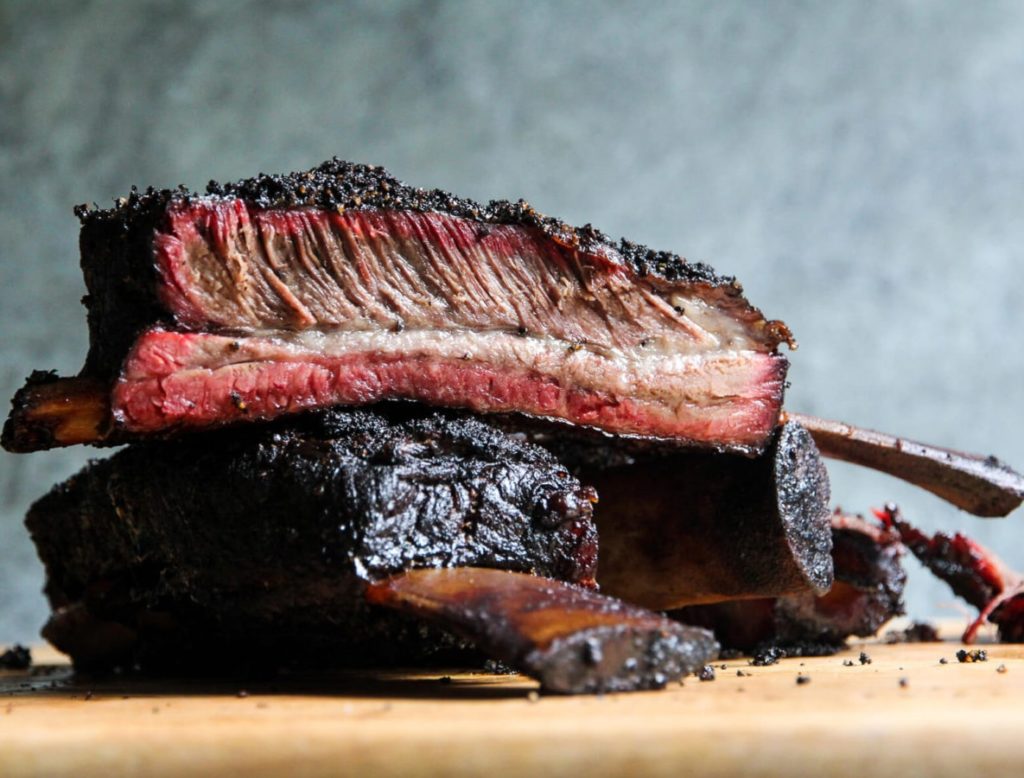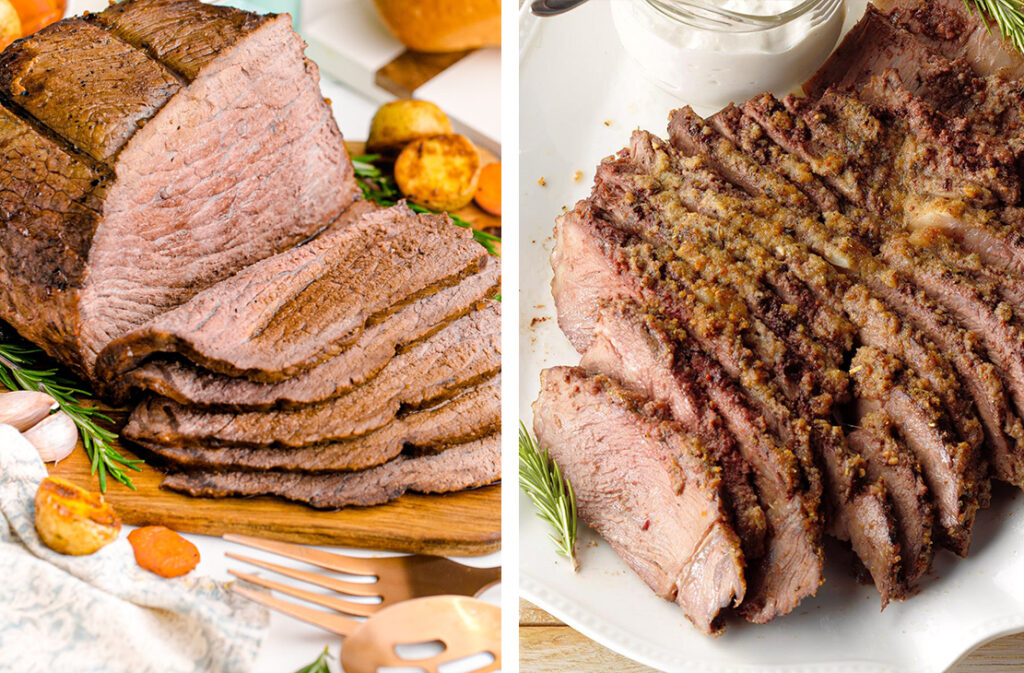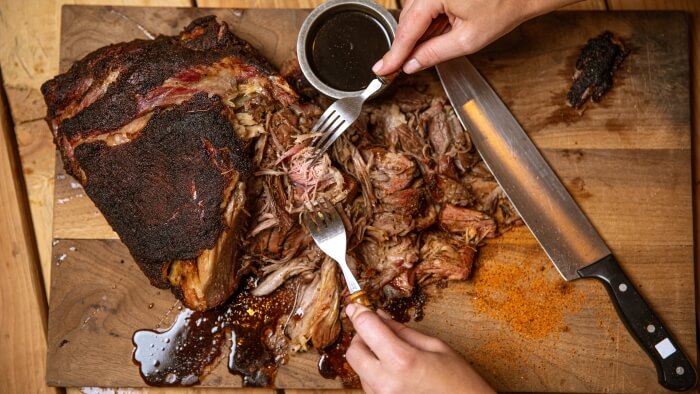
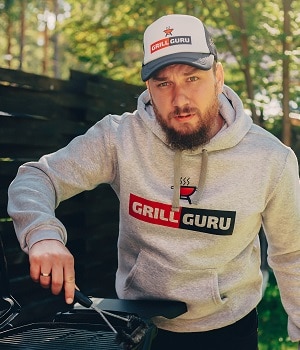
What makes ribs in demand is that you can season them in various ways and pair them with a wide array of dishes for diverse culinary delights. Apart from the animals they come from, there are other notable differences between beef ribs vs pork ribs. For starters, the cuts are different in size, and they also vary in their respective textures and flavors. Beef cuts have more fat, and they are obviously larger than pork ribs. Because they differ in their compositions, flavor, and nutritional value, the ease and methods of cooking pork ribs and pork ribs will also be different.
We have discussed these differences in detail to help you choose the ribs that most match your lifestyle and dietary needs. We have also compared the cost and availability of beef ribs vs pork ribs to provide you with more information for an informed decision.
We will start by explaining the types of beef ribs, their size, composition, and how easy they are to cook.

Back Ribs: They are cut from the upper half of the rib cage after removing the ribeye meat. For this reason, they have a lower meat-to-bone ratio, and they are less flavorful compared to short ribs. This makes them a favorite for a prime rib roast with the meat sandwiched between bones.
Short ribs: This type comes from the lower half of the rib cage. They are more expensive and meatier than beef back ribs, which makes them very tender and flavorful. They have also known as plate short ribs when they are cut in large sizes or chuck short ribs, which are smaller and easily available at the grocery store.

To infuse a smoky flavor, use hickory, whose strong, nutty flavor favors beef as well as pork, or pecan, which is a milder version of hickory. Otherwise, the strong flavor of beef ribs will overpower woods like maple, which has a light aroma.
Earlier in our comparison of beef ribs vs pork ribs, we established that the former is larger in size. But just how large are those ribs? Well, that depends on the cut; some cuts are so big that they are sometimes marketed as “dinosaur ribs” for restaurants, while others are small enough to almost match the typical size of pork ribs. You are likely to find a single rob weighing at least 2 pounds with a length of 8 to 12 inches.

Leaner or small-sized meat takes shorter to cook. So, a budding chef may find it more convenient to cook back ribs more than short ribs or prefer pork ribs to beef ribs.
The advantage of beef ribs is their low-calorie fat content which you don’t have to remove before cooking. Use a slow cooker, Kamado Joe smoker, or a grill set to between 225°F to 250°F. You could speed the process by wrapping the ribs in foil halfway through the cooking. This also keeps them moist and tender. Another way to cook faster is to get the Magma gas grill with infrared for intense heat and a viewing window to limit smoke and heat loss. Also, remember to keep beef ribs seasonings simple.
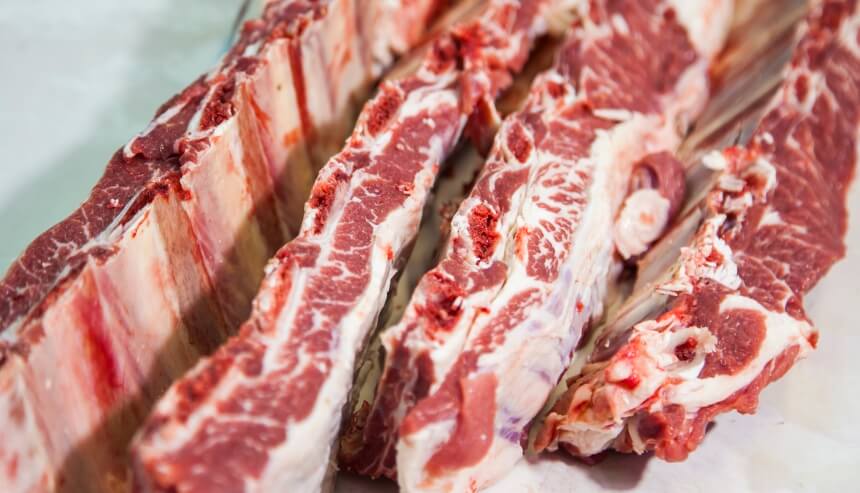
Beef ribs also feature plenty of heavily marbled meat which makes the ratio of meat to fat almost even.
The fat and meat content also varies according to the type of cut, animal, and breed. For instance, short ribs are meatier than back ribs.
Beef ribs cost much more than pork ribs. For beef cut types, back ribs are cheaper than short ribs because they have less meat.
As expected, beef ribs are almost synonymous with Texas, which is known for its ranches and barbecues. They are also popular in Korea Trusted Source Korean grilled beef short ribs (galbi gui) For Koreans, galbi is the ultimate grilled beef dish. Serve it with salad leaves, rice, kimchi and pickled onions, using the leaves to make small parcels containing a little of everything. www.bbc.co.uk .
Compared to beef ribs, how do pork ribs fare when it comes to their cut types, fat content, taste, or how they should be cooked? Find out more below.
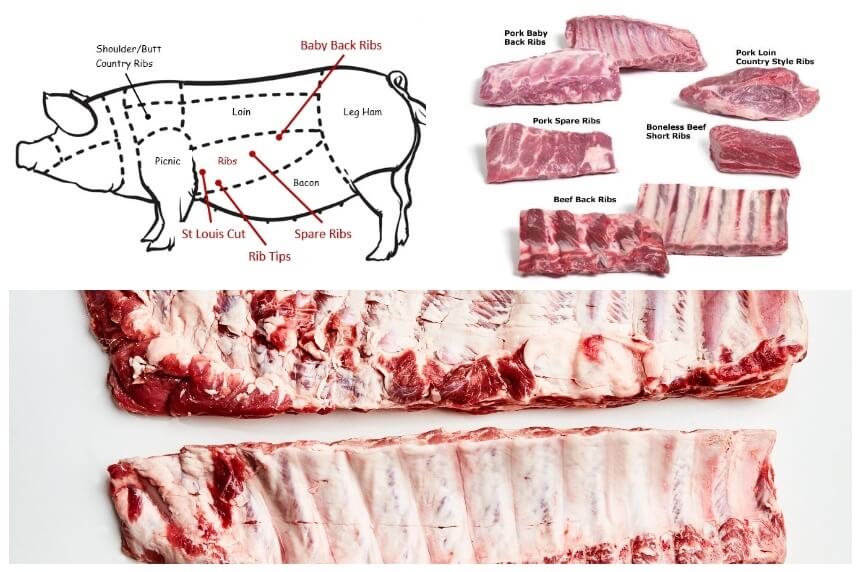
Back ribs: This type comes from the upper rib cage. It is also known as loin ribs since it includes meat that remains after you cut away the loin primal. They are curved and leaner than other pork ribs and also tender. This is convenient because it shortens their cooking time, making them ideal for beginners. You may also see these ribs referred to as baby back ribs due to their size, which is smaller than spare ribs.
Spare ribs: These ribs are widely available in American South. They are cut from the sternum around the pig’s belly. Due to this, they consist of a fair bit of fat and more meat that makes them more flavorful than back ribs. They are also flatter and cheaper.
St. Louis Ribs: They are not as easily available as other types of pork ribs, but you may find them in specialty markets and in cooking competitions where they are a popular choice. St. Louis ribs come from trimmed spare ribs that have the cartilage and bones from their ends removed with a steak knife to make a flat, rectangular cut that is packaged for presentation and cooks evenly.
Rib tips: These are the cartilage and the bits of bones that are trimmed off to make St. Louis ribs. They have a bit of meat with plenty of fat marbling that makes them very tender. Instead of discarding them, chop them into small pieces and cook them for tasty nibbles.
Country-style ribs: Technically, these are not pork ribs but bone-in pork chop from the loin. It may be cut as one bone or two bones.

If you consider where beef ribs and pork ribs come from, it is obvious that cattle are larger than pigs. This also applies to the sizes of their respective ribs. Pork ribs are significantly smaller and have shorter bones.
The cuts are measured in ounces. You can buy many rib racks if you need larger portions or if you want to use different seasonings for different batches.
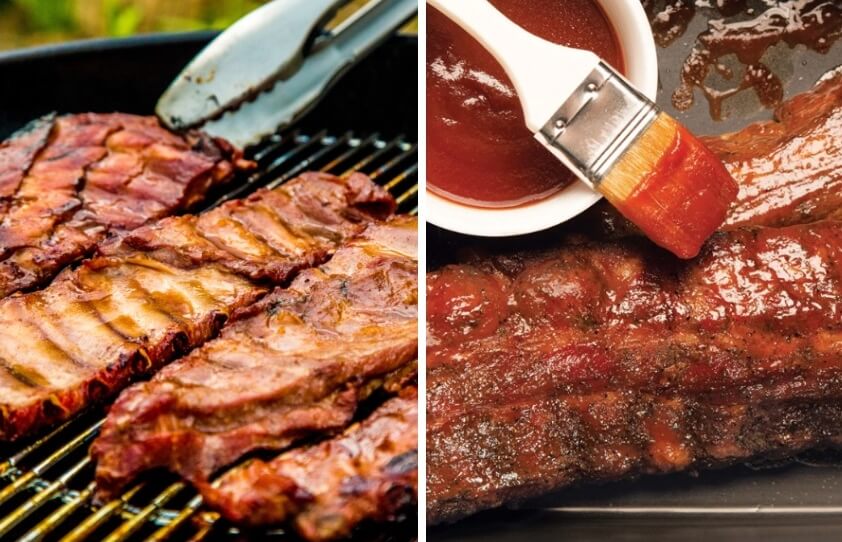
Depending on the cut, smoking pork ribs take up to 6 hours at a temperature of 225F to 250F. This Masterbuilt smoker comes with reliable built-in temperature control that will maintain consistent heat.
Add sauce during the last hour of smoking to prevent an undesirable flavor.
The most common way of smoking ribs is the 3-2-1 method. You smoke the ribs for 3 hours, and then wrap them in foil and cook them for another 2 hours with fluid in the smoke. After that, increase the temperature and smoke the pork ribs for 1 hour while they are unwrapped. Variations of this method include the shorter 2-1-0.5 and 2-1-1 for fewer crispy ribs with a chewy back or for a smaller batch of pork ribs.
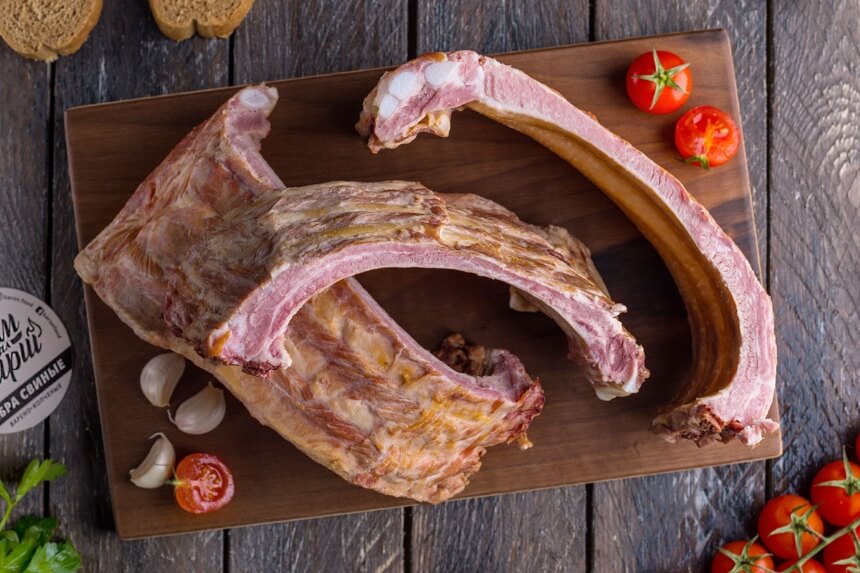
While the meat-fat ratio of beef ribs is almost equal, pork ribs have more meat than fat. This is most notable in cuts derived from the upper section of the rib cage. Rib tips are mainly composed of fat; these trimmings are from spare ribs that require special care to render the fat for moist and tender pork ribs. On the other hand, back ribs that are cut from the upper rib cage are leaner and thus healthier.
Pork ribs are cheaper than beef ribs. Also, spare ribs are the least expensive option among the other cuts of pork ribs, such as back ribs.
Pork ribs, especially spare ribs and baby back ribs, are readily available at your local grocery store. They are most common in Chinese cuisines and in the Midwestern region of the United States.
As you must have noticed, there are many factors that will determine the superior option for you if you are in beef ribs vs pork ribs dilemma. Beef ribs cost more, but they have intense barbecue flavor, low-calorie fat that helps to keep the meat moist and tender, and you only need to buy a few ribs per person. On the other hand, pork ribs are a great low-fat choice that is cheaper, easy to cook, and compatible with varied recipes. We have also explained the recommended wood and seasonings as well as the areas where you can find pork ribs or beef ribs.

